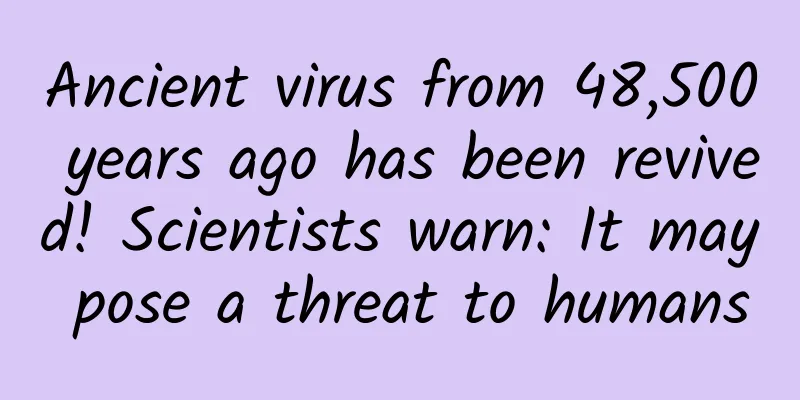Ancient virus from 48,500 years ago has been revived! Scientists warn: It may pose a threat to humans

|
According to a report on the website of the British magazine New Scientist on the 23rd, French scientists recently revived seven viruses that had been frozen in the Siberian permafrost for tens of thousands of years. The youngest of them was frozen for 27,000 years; the oldest was frozen for 48,500 years, making it the oldest virus revived so far. The relevant research was published on the biological preprint website bioRxiv. The team led by Jean-Michel Claverie of the University of Marseille, who led the latest study, had previously revived two viruses that had been frozen in permafrost for 30,000 years. The 48,500-year-old virus, which came from permafrost 16 meters below the surface of a lake in Yakutia, Russia, is a Pandoravirus, a giant virus that infects single-celled organisms called amoebas. In fact, all nine viruses the team has resurrected so far are giant viruses that infect amoebas. In the latest study, scientists added permafrost samples to amoeba cultures and examined them under a microscope for signs of infection, which showed that the virus was "alive" and able to replicate itself . The fact that the viruses were still able to infect cells suggests that if the permafrost thaws, these ancient viruses could potentially infect plants and animals, including humans, Claverie said. And if ancient giant viruses are still infectious after being frozen for so long, then other kinds of viruses could be infectious, too. The research team pointed out that the nine viruses they revived are different from all previously known viruses, so it is extremely unlikely that they came from contaminated samples. In addition, it is possible to revive viruses older than 48,500 years, because the deepest permafrost is one million years old, but it is difficult to determine the age of ancient permafrost because standard radiocarbon dating methods do not work beyond 50,000 years. "It makes sense to understand all the risks that could arise so we can be as prepared as possible," said Rebecca Katz of Georgetown University in Washington, D.C. "The threat of thawing permafrost releasing ancient viruses is a very real one." But Eric Delvoye of the University of California, Los Angeles, thinks the risk of ancient permafrost viruses causing a pandemic is far lower than viruses circulating in domestic and wild animals . Source: Science and Technology Daily |
<<: Filling, down content, filling amount...what do these terms on down jacket labels mean?
>>: Will wearing a mask often cause lung nodules? Or even cancer? The truth is...
Recommend
Highlights of APP free and paid channel promotion!
Before I did it, I had heard of various methods o...
Despite the hype from marketing accounts, the market share is only 0.08%, and it is hard to predict the future sales of laser TVs
At a time when the color TV industry as a whole i...
How should an operator plan an inventory H5?
The day before yesterday, the WeChat report was f...
Google Glass: I'm previewing the future, but you're talking about life and death
Google Glass, once a magical device worshipped by...
In the screen age, how to minimize the impact of electronic screens on children?
Source: Ni Xiaojiang & Jing'an CDC...
Brand promotion: How to do Spring Festival marketing?
It’s the Spring Festival again. Brand owners will...
The United States is leading in autonomous driving, but China has no choice but to give up its illusions and rely on itself to catch up.
Autonomous driving technology is the future devel...
How to get the Taobao Live invitation code? What are the tips for Taobao Live?
This article mainly introduces how to obtain the ...
Transaction Gold Link Apollo Mobile Terminal Abnormal Monitoring System
Overview 01Business Background and Purpose Genera...
Honor 60: A favorite among those who love appearance, a treasure for photographers
When Honor first started to "go it alone&quo...
Million-dollar anchor operation employment class
Newcomer's debut, complete program for amateu...
Milk tea tastes good, but don’t drink too much!
Milk tea, as the name suggests, is a drink made b...
What can be done for overseas promotion? How to do it?
When it comes to how to do overseas promotion , m...
Analysis of Toutiao’s express version of user operation system!
Data from multiple surveys show that the number o...
The difference between opening a regular account and a rebate account for Baidu bidding promotion
Formal account: The domain name registration and ...









